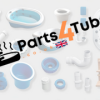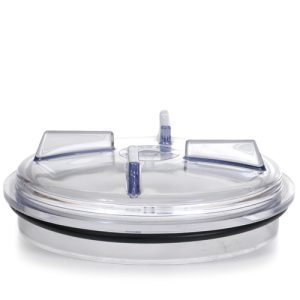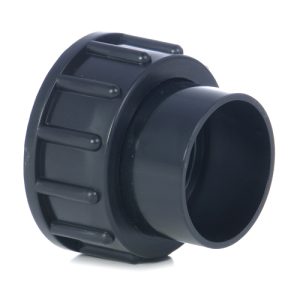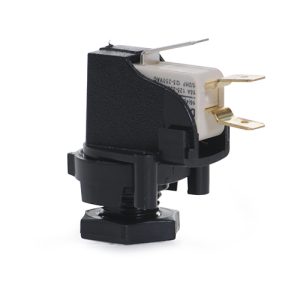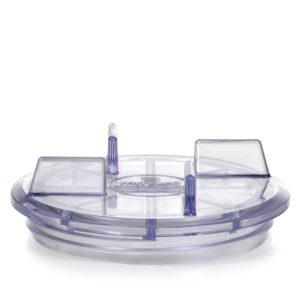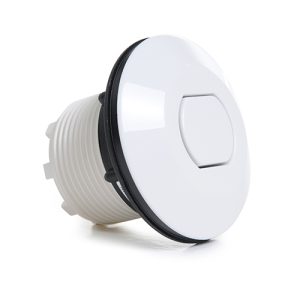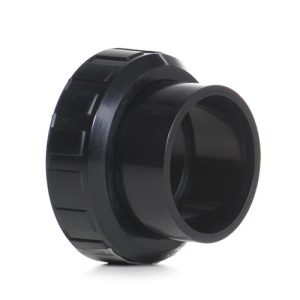BIO-UV170 / 250 340 Cap
£85.41 Inc VAT
Out of stock
Want to be notified when this product is back in stock?
BIO-UV170 / 250 / 340 Cap
Professional-Grade Reactor End Cover for High-Capacity UV Systems
As a retailer of hot tub spare parts and pool equipment, I supply this robust end cap component designed for BIO-UV’s larger capacity ultraviolet water treatment systems. This cap provides compatibility across the UV170, UV250, and UV340 reactor models, serving as the critical closure element that seals high-capacity reactor chambers while accommodating the electrical connections, lamp assemblies, and structural requirements of professional-grade UV installations. The multi-model compatibility across this power range makes it an essential component for service operations maintaining commercial pool facilities and large residential installations.
Understanding High-Capacity End Cap Requirements
The reactor cap for UV170, UV250, and UV340 systems must meet more demanding structural and functional requirements than caps designed for smaller systems. These models represent substantial UV power outputs serving higher flow rates and larger water volumes typical of commercial pools, water parks, and large residential installations. The cap must withstand higher operating pressures associated with greater flow rates while maintaining watertight integrity across larger diameter reactor chambers that accommodate more powerful UV lamp configurations.
The cap provides sealed closure for one end of the stainless steel reactor chamber, incorporating mounting provisions for electrical components including lamp connectors, ballast interfaces, and potentially monitoring sensors or control elements. The design must accommodate multiple lamps in some configurations, requiring additional penetrations and more sophisticated electrical integration compared to single-lamp residential systems.
Multi-Model Design Philosophy
The cap’s compatibility across UV170, UV250, and UV340 models reflects BIO-UV’s engineering approach of standardizing components across product families where practical. These model designations likely represent different power outputs (170W, 250W, 340W approximately) or flow capacities within BIO-UV’s commercial product range. Despite differences in lamp power, chamber length, or internal flow optimization, these systems share common reactor chamber diameters and end cap mounting specifications that enable component standardization.
This design philosophy delivers substantial practical benefits. Service technicians maintaining facilities with multiple BIO-UV systems can stock a single cap design to service various installation sizes, reducing inventory complexity and ensuring parts availability. The standardization also indicates these systems share electrical connection standards and lamp mounting approaches, simplifying maintenance procedures and reducing the technical knowledge required to service different capacity systems within the product family.
Structural Engineering for Commercial Applications
Commercial UV systems operate under more demanding conditions than residential installations, requiring more robust construction throughout. The cap must provide adequate structural strength to support heavier lamp assemblies, withstand higher mounting loads, and maintain seal integrity despite greater pressure differentials across the reactor chamber. The material selection, typically marine-grade stainless steel or high-performance engineered plastics, must resist corrosion in commercial pool environments where chemical concentrations and usage intensity exceed residential conditions.
The mounting interface between cap and reactor body must distribute sealing loads uniformly around large-diameter chambers while providing rigid support for internal components. Bolted or clamped mounting systems for commercial caps typically incorporate multiple fasteners arranged around the circumference, ensuring even compression of large-diameter seals and preventing distortion that could create leak paths.
Electrical Integration and Multi-Lamp Configurations
Higher-capacity UV systems often employ multiple UV lamps within a single reactor chamber to achieve required power outputs. The cap design must accommodate electrical penetrations for multiple lamp connections while maintaining watertight integrity and electrical safety. Each lamp requires separate power connections routed through sealed penetrations in the cap assembly, with proper insulation, clearance distances, and protection against moisture ingress.
The electrical integration may include provisions for UV sensors that monitor lamp output intensity, enabling advanced control systems to verify adequate UV dosage delivery and alert operators to lamp degradation or failures. Temperature sensors monitoring lamp or ballast temperatures might also integrate through cap penetrations, providing data for thermal management and protection systems. These monitoring capabilities are essential in commercial applications where consistent water quality directly impacts facility operations and regulatory compliance.
Pressure Rating and Seal Technology
Commercial UV systems typically operate at higher pressures than residential units due to greater flow rates through larger filtration systems. The cap’s pressure rating must exceed maximum operating pressures with adequate safety margins, while sealing technology must maintain integrity throughout pressure cycling, thermal expansion, and long-term chemical exposure. Large-diameter O-rings or gaskets employed in commercial cap seals require precise groove geometry and controlled compression to achieve reliable sealing.
The seal design must accommodate thermal expansion as the reactor chamber and cap heat during operation, while maintaining adequate compression to prevent leakage as components cool. Multiple sealing elements or specialized seal geometries may be employed to ensure redundancy and reliability in demanding commercial applications where system failures have significant operational and financial consequences.
Service Access and Maintenance Considerations
Commercial UV systems require regular maintenance including lamp replacement, quartz sleeve cleaning, and component inspection. The cap design must facilitate efficient service access while maintaining robust sealing and structural integrity. Quick-disconnect electrical connectors, tool-free or simple-tool mounting systems, and clear component identification enable maintenance personnel to complete service procedures efficiently, minimizing system downtime that affects facility operations.
The cap’s weight and handling requirements influence maintenance procedures and may necessitate lifting equipment for safe removal and installation in large system configurations. Proper handling provisions, alignment features, and installation guidance ensure maintenance can be performed safely and correctly even in challenging installation locations.
Compatibility Verification and Application
While this cap design serves UV170, UV250, and UV340 models, proper application requires verification that the specific system configuration falls within the compatible range. Technical documentation or consultation with BIO-UV resources confirms compatibility for particular installations, as variations in manufacturing dates, system revisions, or regional specifications might affect component interchangeability.
The cap may incorporate model-specific features despite overall dimensional compatibility, such as different electrical penetration configurations, mounting provisions for model-specific sensors or controls, or variations in materials or finishes. Understanding these variations ensures correct component selection and proper installation for each application.
Chemical Resistance and Environmental Durability
Commercial pool environments subject equipment to aggressive chemical exposure from chlorine, bromine, pH adjusters, and specialty treatment chemicals at concentrations exceeding residential applications. The cap material must resist corrosion, chemical attack, and degradation throughout extended service life despite this harsh environment. Stainless steel components require appropriate alloy selection (typically 316 or 316L for marine applications), while plastic components need UV-resistant formulations with chemical compatibility verified for pool applications.
Environmental factors including temperature variations, humidity, and potential exposure to weather in outdoor installations further stress component materials. The cap’s design must accommodate these conditions while maintaining structural integrity, sealing performance, and electrical safety throughout its intended service life.
Technical Specifications
| Specification | Details |
|---|---|
| Product Name | BIO-UV170/250/340 Cap |
| SKU | 7111676182 |
| Category | UV System Spare Parts |
| Compatible Models | BIO-UV UV170, UV250, UV340 |
| Component Type | Reactor End Cap Assembly |
| Application | High-Capacity UV Reactor Chamber Closure |
| Primary Functions | Chamber Sealing, Lamp Access, Electrical Integration |
| Typical Application | Commercial Pools, Large Residential Installations |
| Material Type | Corrosion-Resistant (Marine-Grade Stainless Steel or Engineered Plastic) |
Supporting Commercial Water Treatment Reliability
The BIO-UV170/250/340 Cap represents a critical infrastructure component whose reliable performance enables effective UV water treatment in demanding commercial applications. By providing robust sealed closure while accommodating the electrical integration and structural requirements of high-capacity UV systems, this component facilitates the consistent water quality essential for commercial pool operations. Multi-model compatibility delivers practical value for service operations maintaining diverse installations, streamlining inventory and simplifying maintenance across different system capacities. Proper installation with appropriate sealing elements, correct torque specifications, and attention to electrical safety ensures the cap maintains pressure integrity and system reliability throughout extended service intervals. Timely replacement when degradation appears protects the substantial investment commercial UV installations represent while preserving the pathogen inactivation performance that justifies UV technology adoption in professional aquatic facilities.
| Supplier | GoldenC |
|---|

